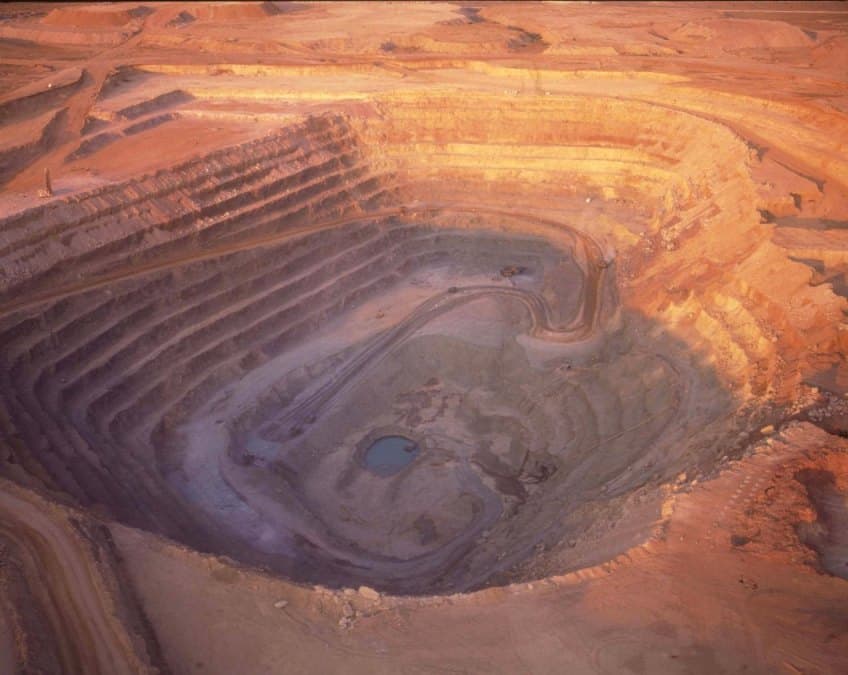UK-based mining giant Anglo-American, listed on the London and Johannesburg stock exchange, with a portfolio spanning iron-ore, manganese, metallurgical and thermal coal, copper, nickel, niobium, phosphates, platinum and diamond, released their 2013 preliminary operating and financial review for the financial year 2013, on February 14, 2014. Overall, Anglo-American announced underlying earnings of $2.7 billion with a 6% increase in underlying operating profit from $6.2 billion to $6.6 billion, attributed to De Beers contributing for a full year as a subsidiary, improved sales at both Copper and Platinum and the weakening of the South African rand, partially offset by lower prices across the majority of the commodities.

The diamond sector’s performance , whose share of group underlying operating profit was 15%, was mainly attributed to increased production reflecting improved asset performance and customer demand, with higher realised prices. Diamond sales increased slightly to $6.4 billion in 2013, from $6.1 billion sales recorded in 2012. De Beers’ rough diamond price index increased by 2% since the beginning of the year, while average realised rough diamond prices were 5% higher, driven by the product mix. In the year 2013, De Beers successfuly completed the transfer of its sales activities from London to Botswana, ahead of schedule, enabling the hosting of international sights in Gaborone in November and December 2013.
Diamonds generated an underlying operating profit of $1,003 million, a 112% increase from the figure of $474 million for the year 2012, reflecting the Group’s increased shareholding, together with improved prices, largely owing to the product mix, and a weaker rand. Diamond production increased by 12% to 31.2 million carats from the 2012 figure of 27.9 million carats, largely owing to the full restoration of operations at Jwaneng in the third quarter following the slope failure incident in June 2012. Production from Canada also increased owing to further increases in mining volumes and improved grades at Snap Lake. In South Africa production at the Venetia mine was disrupted at the beginning of the year due to heavy flooding, but production gradually resumed in the third quarter and fully recovered in the fourth quarter. However, shortfalls in ore mined were mitigated by the processing of ore stockpiles. In Namibia, Debmarine Namibia performed strongly, largely due to the contribution of the MV Mafuta following its production upgrade in early 2013. Namdeb also performed well, with carat recovery higher than in 2012
Despite global macro-economic uncertainty, diamond jewelry sales increased in local currency terms in all major diamond markets, except India. In India, challenging economic conditions and a devaluation of the rupee resulted in a decline in demand. The US market posted positive growth, with a generally strong holiday season in the fourth quarter. China continued to show positive growth rates, but at levels consistent with slower economic development
Although the De Beers rough price index increased slightly in the first half, a combination of weaker polished prices, high levels of stock in the cutting centers and tightening liquidity resulted in some of this increase being reversed in the second half. The price decrease, together with an increase in polished sales, saw the rough market stabilize and start to improve toward the end of the year
Dealing with brands the report states, that De Beers Forevermark showed strong growth in 2013, driven mainly by the core markets of the US, China, Japan and India. Since the launch of Forevermark, more than 870,000 diamonds have received the Forevermark inscription and unique identification number, with the promise that each diamond has met the brand’s high standards of quality, ethical integrity and provenance.The brand is now available at more than 1,200 retail partners in 12 markets around the world.
De Beers Diamond Jewelers opened new directly operated stores in Shanghai and Hong Kong’s Times Square.It also opened stores in Kuala Lumpur, Baku,Vancouver and Kiev through franchise partnerships
The report then dealt with the status of projects for expanding production in the future in Botswana, South Africa and Canada. In this regard it stated that in Botswana, infrastructure construction at Debswana’s Jwaneng Cut-8 project is now complete, paving the way to access an estimated 96 million tonnes of ore, which when treated would produce approximately 113 million carats of mainly high quality diamonds, and extend the life of one of the world’s richest diamond mines to at least 2028.
In South Africa, the report said, the first blast for the construction of an underground mine beneath the open pit at Venetia took place in September 2013. The capital investment of $2 billion on this project by De Beers represent the largest ever investment by the company in South Africa. Underground exploitation of the mine is expected to begin in 2021 and would extend the life of the mine beyond year 2040. During the life period of the mine approximately 129 million tonnes of ore are expected to be treated producing an estimated 94 million carats
In respect of Canada, the report said, the Mackenzie Valley Land and Water Board approved a pioneer Land Use Permit for Gahcho Kué, which allows land-based site works to commence in preparation for deliveries planned for the 2014 winter road season.
The report on the diamond sector ends with an outlook for the performance of the diamond industry and trade in the current year 2014. Based on the gradual improvements in the global economic outlook for the year 2014, De Beers expects a slight strengthening in growth in the demand for diamond jewelry. The U.S. and China, the main engines of growth for polished diamonds are expected to continue this role, while most other markets are expected to show positive growth in local currency, with final dollar denominated results being partly dependent on currency fluctuations. In India, further volatility of the rupee may potentially affect rough diamond sales. The report concludes, that in the medium to long term, industry fundamentals are expected to strengthen as diamond production plateaus and demand continues to increase.
